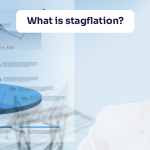The 56th meeting of the GST Council, chaired by Union Finance Minister Smt. Nirmala Sitharaman in New Delhi, has introduced far-reaching reforms in India’s indirect taxation framework.
The highlight of these reforms is the rationalisation of the current 4-tiered tax structure into a simplified 2-rate system – a Standard Rate of 18% and a Merit Rate of 5%, with a special de-merit rate of 40% for select goods and services.
The changes focus on easing the tax burden for the common man, supporting labour-intensive sectors, boosting agriculture and healthcare, and correcting inverted duty structures.
Below is a detailed breakdown of what gets cheaper and what gets expensive under the new GST reforms.
1. Insurance Sector - Making Insurance Affordable
- GST exemption on all individual life insurance policies (term life, ULIPs, endowment policies) and reinsurance.
- GST exemption on all individual health insurance policies, including family floater and senior citizen plans.
2. Everyday Consumer Goods
- GST reduced from 18% or 12% to 5% on household items like hair oil, soaps, shampoos, toothbrushes, toothpaste, bicycles, tableware, kitchenware, and other household articles.
- GST reduced from 5% to NIL on Ultra High Temperate (UHT) milk, pre-packaged paneer or chena, and all Indian breads (roti, chapati, paratha, parotta, etc.).
- GST has been reduced from 12% or 18% to 5% on packaged foods such as namkeens, bhujia, sauces, pasta, instant noodles, chocolates, coffee, preserved meat, cornflakes, butter, and ghee.
3. Agriculture and Farming
- GST reduced from 12% to 5% on tractors, cultivation and harvesting machinery, threshing equipment, straw balers, grass mowers, composting machines, and other agricultural machinery.
- Fertiliser sector correction: GST reduced from 18% to 5% on sulphuric acid, nitric acid, and ammonia.
4. Labour-Intensive Industries
- GST reduced from 12% to 5% on handicrafts, marble and granite blocks, and intermediate leather goods.
5. Healthcare and Medicines
- GST reduced from 12% to NIL on 33 lifesaving drugs and medicines.
- GST reduced from 5% to NIL on 3 lifesaving drugs for cancer, rare and chronic diseases.
- GST on all other drugs and medicines reduced from 12% to 5%.
- GST reduced from 18% to 5% on medical devices and apparatus used for surgical, dental, veterinary, and analytical use.
- GST reduced from 12% to 5% on medical supplies like gauze, bandages, diagnostic kits, reagents, and glucometers.
6. Automobiles and Transport
- GST reduced from 28% to 18% on small cars and motorcycles up to 350cc.
- GST reduced from 28% to 18% on buses, trucks, and ambulances.
- Uniform rate of 18% on all auto parts, irrespective of HS code.
- GST on three-wheelers reduced from 28% to 18%.
- GST on cement reduced from 28% to 18%.
- GST reduced from 28% to 18% on air-conditioners, TVs up to 32 inches (now all TVs at 18%), dishwashing machines, and motorcycles ≤350cc.
7. Textiles
- Correction of inverted duty: GST reduced from 18% to 5% on manmade fibre.
- GST has been reduced from 12% to 5% on manmade yarn.
8. Renewable Energy
- GST reduced from 12% to 5% on renewable energy devices and parts used for their manufacture.
9. Hospitality and Services
- GST reduced from 12% to 5% on hotel accommodation up to ₹7,500 per unit per day.
- GST reduced from 18% to 5% on personal care services such as gyms, salons, barbers, and yoga centres.
The 56th GST Council meeting has not only rationalised rates but also introduced higher slabs for certain goods. Below is a detailed sector-wise breakdown of items that will get more expensive under the revised GST framework:
1. From 28% to 40%
- Pan Masala and Beverages: Pan masala, all goods (including aerated waters) containing added sugar or other sweetening matter, flavoured beverages, caffeinated drinks, and carbonated beverages with fruit drink or fruit juice will now attract 40% GST.
- Tobacco and Related Products: The tax slab for tobacco and allied products has increased to 40%. This covers unmanufactured tobacco (other than tobacco leaves), cigars, cheroots, cigarillos, cigarettes, other manufactured tobacco substitutes (including homogenised or reconstituted tobacco, extracts, and essences), as well as products intended for inhalation without combustion, including nicotine substitutes.
- Luxury and High-End Goods: The GST rate has been raised to 40% for motor cars designed for passenger transport (except those already moved to 18%), hybrid vehicles with engine capacity above 1500cc or length exceeding 4000 mm, motorcycles exceeding 350cc, diesel hybrids, aircraft for personal use, yachts, and other vessels for pleasure or sports.
- Arms and Smoking Accessories: Revolvers and pistols (excluding those under headings 9303 or 9304), along with smoking pipes, pipe bowls, cigar or cigarette holders, and their parts, now fall under the 40% bracket.
2. From 18% to 40%
- Other Non-Alcoholic Beverages: GST on non-alcoholic beverages not covered under the earlier category has been raised from 18% to 40%.
3. From 5% to 40%
- Coal and Fuel Products: The GST rate on certain fuel items has been steeply increased from 5% to 40%. This includes coal and coal-based fuels like briquettes, ovoids, and similar solid fuels manufactured from coal; lignite (excluding jet); and peat, including peat litter, whether or not agglomerated.
4. From 5% to 40%
- Apparel and Textiles: Articles of apparel and clothing accessories—both knitted/crocheted and non-knitted—with a sale value above ₹2,500 per piece will now attract higher GST. Other made-up textile articles (excluding worn clothing and rags) under Chapter 63, cotton quilts, and quilted textile material products priced above ₹2,500 per piece will also be taxed at a higher rate, making premium textile and quilted goods more expensive.
5. From 12% to 18%
- Paper and Paperboard: The GST rate has been increased on chemical wood pulp (dissolving grades), uncoated paper and paperboard for writing, printing, and graphic purposes (excluding exercise books and notebooks), uncoated kraft paper, greaseproof and glassine papers, composite and corrugated paperboard, and coated paper/board with kaolin or other inorganic substances.
- Menthol and Oils: Goods made from other than natural menthol such as menthol crystals, peppermint oil, DTMO, DMO, spearmint oil, and mentha piperita oil now fall under the 18% bracket.
- Miscellaneous Items: The GST rate has also been raised on odoriferous preparations operating by burning (excluding agarbattis, lobhan, dhoop, sambhrani), biodiesel (other than supplies to Oil Marketing Companies for blending with high-speed diesel), and goods required for petroleum operations under government-granted licenses or specified contracts covering petroleum exploration, marginal fields, and coal bed methane projects.
Conclusion
The GST Council’s 56th meeting has brought significant relief to households, farmers, healthcare users, and small businesses by reducing GST rates on a wide range of essential goods and services. While many sectors will see cheaper goods and services, the introduction of a 40% de-merit slab indicates that a few luxury and sin goods will become costlier. These reforms align with the government’s vision of a simplified, citizen-centric tax system while balancing revenue needs with consumer welfare.




